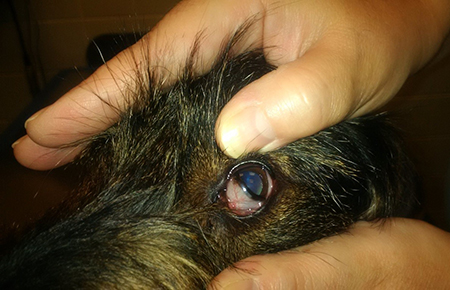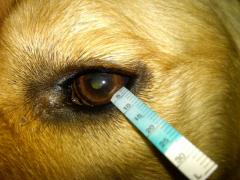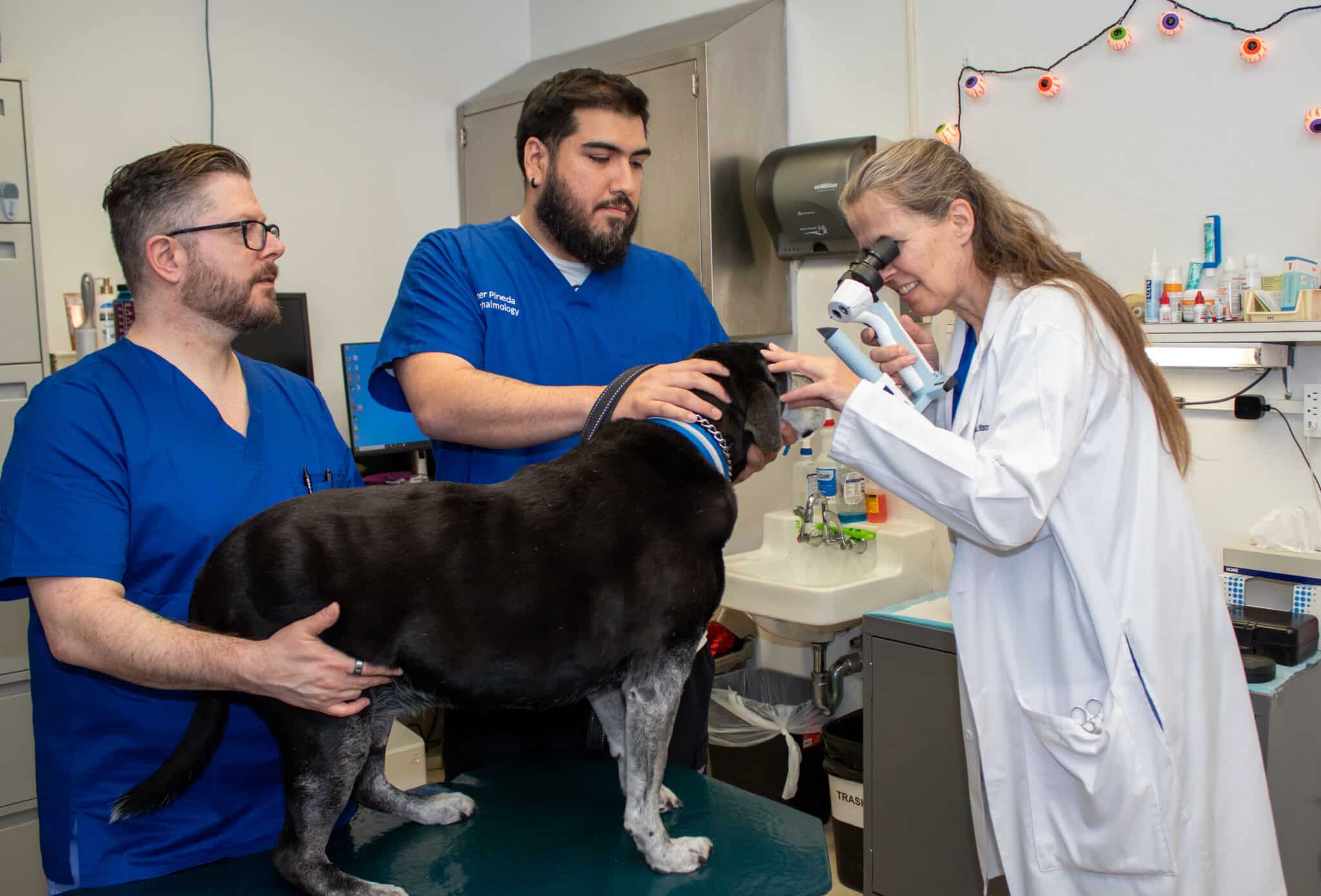Dry Eye (KCS) in Dogs
Background
Keratoconjunctivitis sicca (KCS), also known as dry eye, is a common eye problem in dogs. It is typically the result of inadequate tear production or a deficiency in the quality of tears produced. Two tear glands, the lacrimal gland and nictitans gland (also called the gland of the third eyelid) are responsible for tear production and play a huge role in maintaining the health of your dog’s eyes. Tears supply nutrition to the cornea, keep the surface of the eye lubricated, and wash away debris from the eye. Inadequate tear production can lead to painful, red eyes and thick ocular discharge. KCS can affect one or both eyes. Some dogs may even develop corneal ulcers and a bacterial infection of the white of the eye secondary to KCS.

A dog’s eye with the third eyelid exposed
Risk Factors
The most common cause of KCS is the dog’s immune system attacking the lacrimal and nictitans glands, causing inflammation and thereby reducing tear production. However, this autoimmune response is not the only cause of dry eye – endocrine diseases (diabetes, Cushing’s disease, hypothyroidism), infections (canine distemper virus), neurological deficiencies, cherry eye, removal of the third eyelid or the nictitans gland, radiation therapy near the eye, and drug toxicity are all possible causes of KCS in dogs. Genetics may also play a factor as certain breeds, particularly ones with bulgy eyes like pugs, are more likely to develop KCS than others. These breeds include but are not limited to:
- Cavalier King Charles spaniels
- English bulldogs
- Lhasa Apsos
- Pugs
- Shih tzus
- West Highland white terriers
Signs
- Red eyes
- Thick discharge
- Crust around eye(s) and/or nostril(s)
- Squinting
- Dry, lusterless cornea
- Corneal ulcers
- Eye pain
- Excessive blinking
- Opaque cornea

Diagnosis
Your veterinarian will need to check your dog’s tear production using Schirmer Tear Test strips. A small strip of paper is placed in the eye for one minute to stimulate tear production. As the tears are absorbed by the special ruled paper, an eye-safe dye turns the paper blue as it is moistened by the tears. In normal dogs, the blue dye rises to between 15 and 25 millimeters over the course of one minute. Blue dye below 15mm indicates the dog is producing inadequate tears.
Your veterinary ophthalmologist may also examine the dog’s eyes using a biomicroscope and perform a tear film breakup time (TFBUT) test, which involves placing a fluorescent stain in your dog’s eye.
Treatment
Treatment of KCS has three main aims: to restore tear production, maintain lubrication, and restore transparency to the cornea. Your veterinarian may prescribe artificial tears and medications which stimulate natural tear production. Topical anti-inflammatories and antibiotics may also be prescribed. Treatment for dogs with immune-mediated KCS is lifelong, but effective if done properly.
In the instances where medical intervention does not work, a surgical procedure called parotid duct transposition may be recommended. In this procedure, glands that produce saliva are redirected from the mouth to the eye to provide lubrication.
Prevention
Unfortunately, there is no known method to prevent dry eye. The sooner it is recognized, the better. If you notice any of the signs mentioned above, contact your veterinarian immediately.
Make an Appointment































